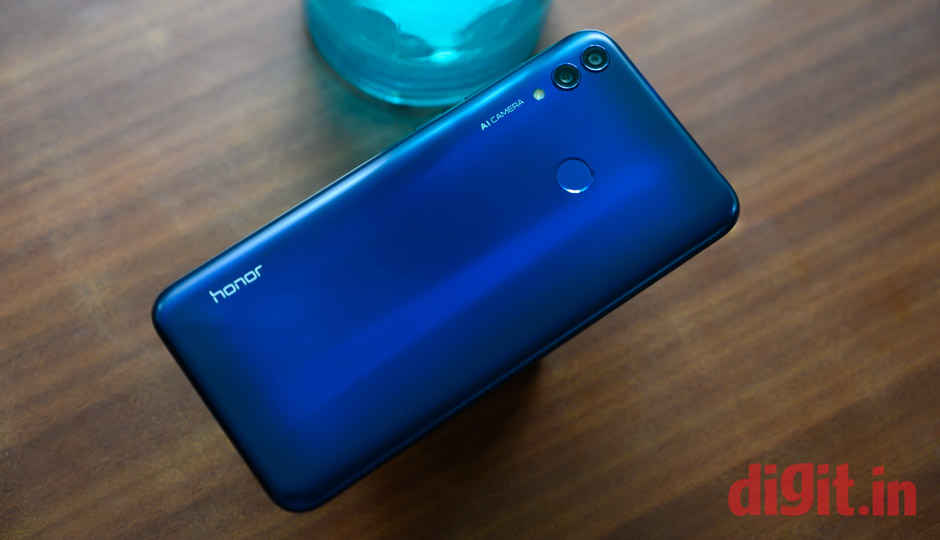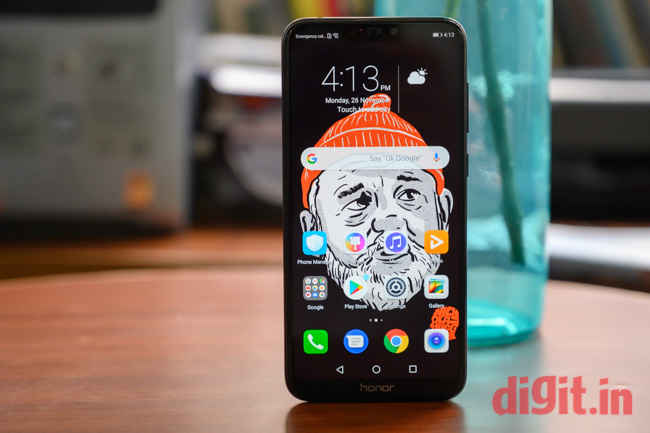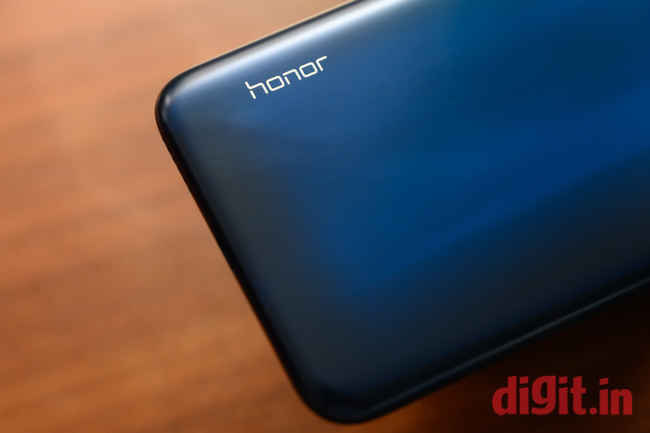Honor 8C First Impressions: Looks good from the outside, predictable from the inside
The Honor 8C is expected to create quite a stir among enthusiasts since this will be the global debut of the Qualcomm Snapdragon 632 chipset.

Countering Xiaomi’s onslaught of devices in the budget and mid-range segment, Honor, which claims to be India’s fastest growing is also on a blitzkrieg. Just a month after launching the Honor 8X, Huawei’s sub-brand will be launching the Honor 8C on November 29. It will be an Amazon exclusive device and Honor hopes the new Honor 8C will keep the momentum going for the brand and even topple the newly-launched Xiaomi Redmi Note 6 Pro.
 Survey
SurveyThe Honor 8C is also expected to create quite a stir among enthusiasts since this will be the global debut of the Qualcomm Snapdragon 632 chipset. The chipset was announced by Qualcomm back in June and it took five months for the SoC to make it to a smartphone. We are in the process of testing out the performance of the new Snapdragon 632 in greater detail, so the final verdict will be out in our in-depth review at a later date. The phone is offered in 4GB RAM with 64GB storage, and we are presuming there will be a 32GB storage variant as well.
The phone was launched in China last month and we have been playing around with for a couple of days before the it launches later this week and these are our first impressions —
Design and Display
The Honor 8C’s design looks starkly different from the crop of Xiaomi phones and even the previous Honor phones in its segment. The Honor 8C sports a polycarbonate back with gradient colours which we believe makes it one of the best-looking phones in the mid-range. We received the Aurora Blue colour variant and the rear plastic chassis glistens when light reflects on it to show various shades of blue. It did feel quite rigid, but the fact that it’s a plastic body may not ring well with many.
The front fascia of the Honor 8C is dominated by the 6.26-inch FullHD+ display. Even though there are phones with the smaller waterdrop notch out there, the Honor 8C sticks to the wide rectangular notch. Unlike the Honor 8X, the screen-to-body ratio is also lesser and there are big bezels at the bottom and thin ones along the side. The display does seem to deliver high level of brightness and colours that are crisp and vibrant.
The notch on top can be annoying for many and Honor does offer the option to hide it. The first-party apps are all designed to accommodate the display cut-out and there is a whitelist inside Display Settings where you can assign apps that will hide the notch.
The Honor 8C also has an eye-comfort mode with TUV Rheinland certification that reduces blue light emission. It turns the screen yellowish and it’s good if you’re reading an article before going to bed, but watching a video with the mode on will tamper with the colours on screen.
Hardware Specifications
The Honor 8C is the first to use the Qualcomm Snapdragon 632 SoC. It was announced back in June at MWC Shanghai and is meant as a successor to the Snapdragon 625 and Snapdragon 626. The chipset is built on a 14nm FinFET process and features eight Kryo 250 cores clocked at 1.8GHz each. There are four performance cores and four efficiency cores. In a lot of ways, the chipset is similar to the Snapdragon 636 that powers the Redmi Note 6 Pro, but not completely. The Kryo 260 cores are slightly better optimised than the Kryo 250 on the Honor 8C and the Snapdragon 632 uses an older Adreno 506 GPU while the Snapdragon 636 uses an Adreno 509. The Snapdragon 632 also brings a faster X9 LTE modem with higher speeds along with AI capabilities. All this makes the Snapdragon 632 a better chipset than the aged Snapdragon 625, but is it better than the current competition? We will find out soon enough.
The Honor 8C has 4GB RAM and offers up to 64GB storage. It feels adequate enough for an affordable mid-ranger, but with phones out with 6GB RAM and 128GB storage, it might not be able to leave lasting impressions. Nevertheless, the phone feels perfectly smooth and snappy. It’s powered by EMUI 8.2 based on Android 8.1 Oreo and while it’s not the most aesthetic UI out there, it’s packed with features like face recognition, app lock, picture-in-picture and more. For the few days we had the phone, it didn’t give us any problem.
Apps and games run smooth with little jitter or lag, but apps did take some time to launch and games like PubG Mobile was only playable at medium graphics.
Camera
The Honor 8C, much like most other Honor devices launched this year, has AI-enabled cameras. By that we mean the front and back camera of the phone can recognise what you’re shooting and adjust the camera settings accordingly. Whether that has a significant improvement is something we are judging through our camera tests, and the verdict will be out in our review.
There is a 13-megapixel rear camera with f/1.8 aperture coupled with a 2-megapixel depth sensor that has an aperture of f/2.4. The secondary sensor is used for semantic image segmentation to enable depth-of-field in shots. There is a separate aperture mode to shoot normal photos with a blurred background, while the portrait mode focuses on a human face and offers various portrait lighting modes as well. The light modes are a direct rip-off from the iPhone XS and doesn’t seem to work all that well. There’s even an AR camera mode that is basically superimposing a background with your face in it using the depth sensor.
First Impressions:
The Honor 8C is a phone that looks appealing from the outside even with a polycarbonate body. Honor’s experimentation with gradient colours and materials have met a durable canvas that can go a long way in making the Honor 8C more durable than the bunch of glass-bodied phones the company launched. Honor’s history of pushing out updates makes me wonder when the phone will receive the update to Android 9.0 Pie (if at all), but overall, the Honor 8C seems to be a phone that just works. All the features in demand in the mid-range segment are there, but it does little to try and set itself apart even with a new Snapdragon chipset and a shiny new body.



